Get Rid of Ticks on Cats for Good
Ensure your feline friend is healthy and tick-free with regular checks and preventative treatment or effectively kill ticks on cats.
TICKS ON CATS
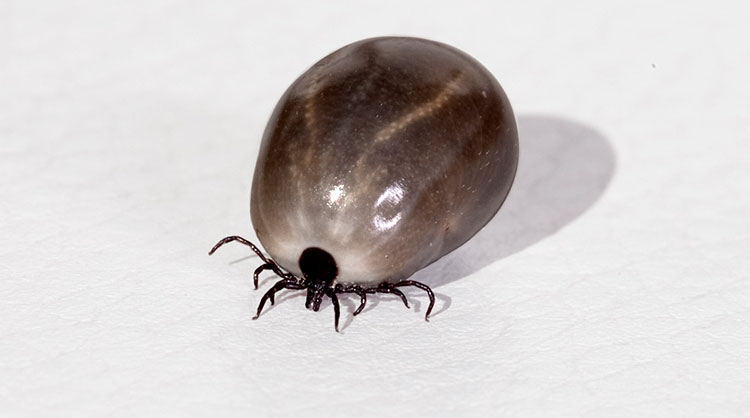
Posted by bravectosouthafrica – 26 September 2019
Guide to Ticks on Cats in South Africa
- What are ticks?
- Meet the tiny threat: types of ticks
- 5 signs of tick fever in cats
- How do ticks affect cats?
- What happens if you are bitten by a tick?
- Spot ticks early – here’s where to look for ticks on cats
- How to remove a tick from a cat
- Tick prevention to keep kitty safe
- Frequently asked questions
What are Ticks?
Ticks are spineless creatures that can make your healthy cat sick very quickly. In some countries (luckily not in South Africa), ticks can cause cat paralysis. These creepy crawlies look like small spiders with a teeny egg body. However quirky their appearance, ticks can wreak havoc on an unsuspecting feline if left untreated. In South Africa, you can find ticks in woody, bushy and coastal areas, especially near wild animals or in rural areas, which means that our outdoor cats are more susceptible to tick bites than indoor kitties. There is no way around it; the best remedy is prevention. Deter tenacious ticks with Spot-On treatment, collars, shampoos or dips.
Get to know your local pest and have a look at the pictures of ticks on cat ears and cheeks below.
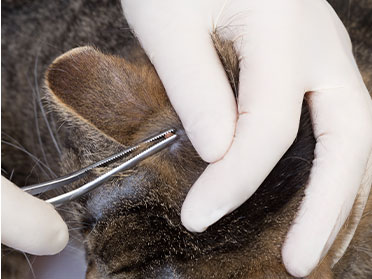

Did you know that one dose of Bravecto® Spot-On for Cats can prevent ticks and fleas for 3 months? Application is simple; see how it’s done in the video below!
Meet the Tiny Threat: Types of Ticks
More than 800 tick species make up the tick family. As identifying one tick from another is tough, keep the tick that bit your dog in a jar for the vet inspection if your pup gets sick. Your veterinarian can inspect the specimen and determine whether it was a carrier of a disease.
The many tick species in the world can be divided into two groups, namely hard ticks and soft ticks. Soft ticks have a raisin-like body and favour poultry and bats above larger mammals like dogs and cats. Hard ticks have a hard shield-like cover over their bodies, and unfed, they can look like a flat seed.
| TYPES OF TICKS FOUND IN SOUTH AFRICA | |||
|---|---|---|---|
| TICK SPECIES | IDENTIFICATION | HABITAT | DISEASES |
| South African Yellow Dog Tick (Haemaphysaliselliptica) | Short mouth area Yellow to orange coloured body Clear segment grooves on their legs Indents on the edge of the body Eyeless | Present in most of South Africa They prefer high rainfall Domestic plots, small-holdings and farms | Babesiosis (Babesia rossi) |
| Kennel Tick/Brown Dog Tick (Rhipicephalus sanguineus) | Reddish-brown or yellowish smooth body Convex eyes Legs with grooved segments | Nationwide Prefers moist and warm areas but can survive in dry areas (not desert) Found in kennels and houses | Ehrlichiosis Tropical Pancytopaenia |
| Bont Tick (Amblyommahebraeum) | Medium to large-sized tick Clearly banded legs Long mouthparts Males have a dark brown and yellow colour pattern that resembles tortoiseshell | Requires bush, moisture and warmth to survive Present throughout South Africa, with dominance in coastal regions | Heartwater Tick Bite Fever |
| Large Coarse Bont-legged Tick (Hyalommarufipes) | Large, dark brown or black body Coarse texture Brightly banded legs with ivory and brown | Present throughout South Africa, except in coastal areas, eastern Free State, Lesotho and Western Cape | R. conorii (humans) Congo Haemorrhagic fever (humans) Can cause lameness in its host |
| Small Smooth Bont-legged Tick (Hyalommatruncatum) Seldom on cats | Narrow, glossy, and slightly indented dark brown body Brightly banded brown legs | Present throughout South Africa, except in parts of Eastern Cape, Free State, Gauteng, KwaZulu-Natal | Can cause lameness in its host Skin necrosis Congo Haemorrhagic fever (humans) R. conorii (humans) |
| Karoo Paralysis Tick (Ixodes rubicundus)*Seldom found on cats | Reddish-brown body Long mouth area Thin legs tuck in closer to the body | Present in cool areas on hills and mountainous veld in the Karoo, Free State, Gauteng, and Mpumalanga | Female ticks can cause paralysis |
So, What Do Ticks Look Like? Have a look at these nasty critters below to find out:
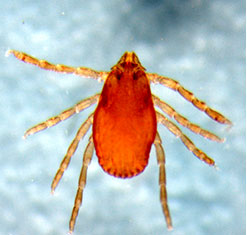
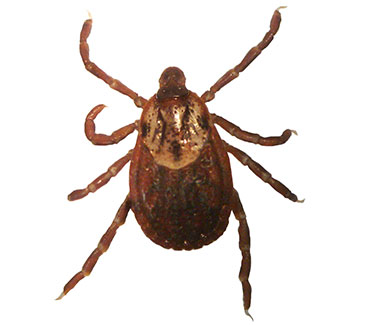
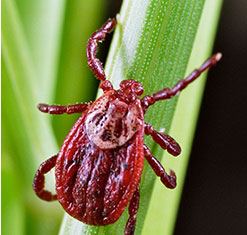
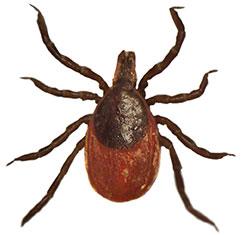
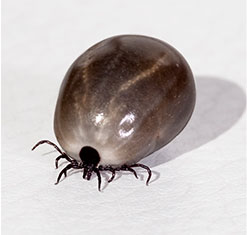
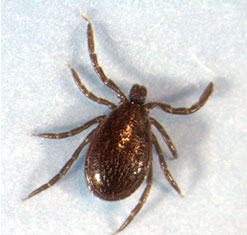
5 Signs of Tick Fever in Cats
When you can’t find a tick on your cat but suspect that he’s been bitten, look out for tick fever symptoms. Unfortunately, ticks can transmit several diseases as they act as vectors or carriers of infectious bacteria or viruses that can cause serious illness in cats and humans. These tick-transmitted conditions often affect a cat’s blood cells that lead to obvious symptoms. Here are the basic signs you can look out for:
- Fever
- Lethargy
- Weight loss and lack of appetite
- Swollen lymph nodes
- Inflamed joints
If your cat displays any of the signs of infection of a tick-transmitted disease, take him/her to the vet for diagnosis and treatment.
How Do Ticks Affect Cats?
Ticks are problematic because they can carry a variety of diseases, some of which are life-threatening. Below are the most common tick-borne conditions and their symptoms. Please note that we have not included Lyme Disease as this is spread by black-legged ticks native to North America.
| TICK- BORN CONDITIONS AROUND THE WORLD | |
|---|---|
| Babesiosis AKA Tick Fever or Biliary FeverBabesiosis is a blood-borne disease that breaks down blood cells and causes haemolytic anaemia. The symptoms of tick fever may be slow on the onset, as the destructive parasites damage cells systematically.Symptoms of Tick Fever:Pale gumsDepressionDark coloured urineFeverUnkempt coatSwollen lymph nodesCollapseToxic shock | Feline Infectious Anaemia(Haemobartonellosis)The mycoplasma bacteria of Haemobartonellosis attack a cat’s red blood cells, which can cause anaemia and, in severe cases, death.Symptoms of Feline Infectious Anaemia:LethargyDepressionEnlarged spleenJaundiceAnorexiaWeight lossPale or white gums |
| EhrlichiosisEhrlichiosis comes from Rickettsia, an organism that enters cells and destroys them from the inside. The rapid cell destruction can become life-threatening if it’s left untreated.Symptoms of Ehrlichiosis:LethargyWeight lossHypersensitivity to light and noiseBreathing difficultyAnaemiaDiarrhoea and vomitingLack of appetitePale mucousEye dischargeEnlarged lymph nodesSwollen joints | Feline PancytopaeniaPancytopenia can affect the bone marrow and destroy blood cells. A cat with pancytopaenia is more susceptible to immune-mediated, infectious and neoplastic conditions.Symptoms of Pancytopenia:Constant feverLethargy and sluggishnessNose bleedsBlood in urineMucosal bleedingRapid breathingIncreased heart rateAbnormal eating behaviour (e.g. eating soil, concrete, litter)Jaundice |
Tick Bites on Humans: What Happens If You Get Bitten By a Tick?
All of the aforementioned tick-transmitted diseases can affect humans. However, Crimean-Congo Haemorrhagic Fever needs special mention as it affects humans specifically and severely. Therefore, it’s crucial to be cautious and avoid infection as CCHF can be fatal.
| Crimean-Congo Haemorrhagic Fever (CCHF) |
|---|
| CCHF doesn’t affect cats but can have devastating consequences on human hosts, with 30% of all cases proving fatal. There is no vaccine for CCHF infection, but supportive treatment is available.Infection in South Africa is rare, but it does occur as two cases have been confirmed for 2019. That is why prevention is essential in high-risk areas. Wear tick repellent and protective clothing to reduce the risk of infection. If a carrier tick bit a human, symptoms may only occur after an initial incubation period of 3-13 days.Symptoms of CCHF:Sudden feverMuscle aches (myalgia)Neck pain and stiffnessDizziness, disorientation and confusionBackacheHeadacheLight sensitivity (photophobia)Sore eyes and throatNausea, vomiting and diarrhoeaAbdominal painMood swingsSleepinessDepressionExhaustionLiver enlargementRapid heart rateEnlarged lymph nodesSkin rash |
Spot Ticks Early – Here’s Where to Look for Ticks on Cats
Ticks that latch onto cats are large enough to spot without a magnifying glass. However, you may need to part the cat’s fur to see them clearly.
Protect your cat from ticks by regularly checking your kitty for these small but sinister arachnids. Inspect your cat daily during your grooming or petting sessions. Did you know that ticks flourish in a humid environment? As a result the following spots on a cat’s body are prime tick real estate:
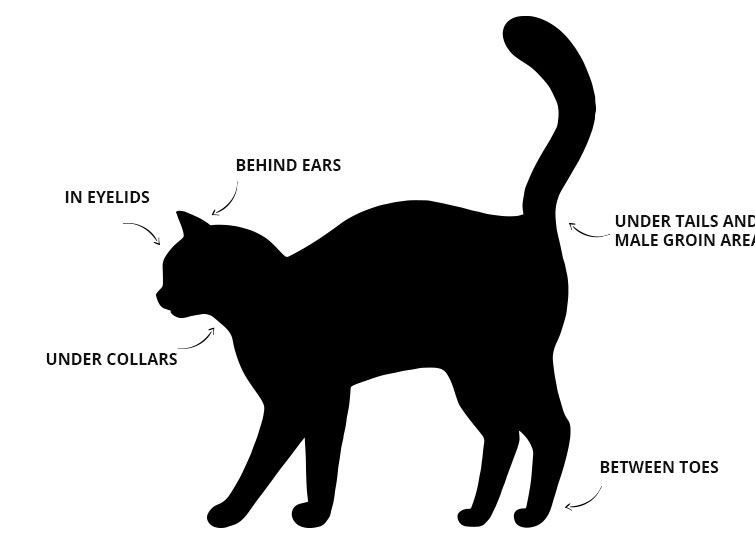
Want to Know How to Remove a Ticks from Cats? It’s Simple!
There are a couple of myths on what will make a tick back out and let go from its host. However, some of these home remedies can make a tick dig deeper into the skin. Rather stick to trusted removal methods than trying Vaseline suffocation or prodding a tick’s body with a burning match.
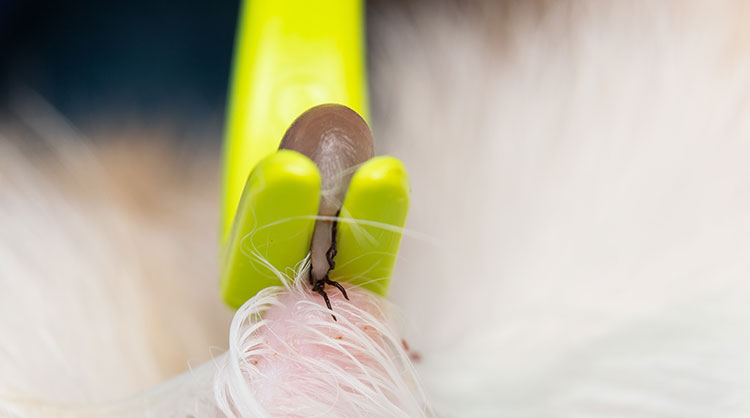
Use Special Tweezers to Remove a Tick from a Cat
Using a pair of tweezers is a quick go-to home remedy for many South African citizens. However, if the tick is not removed correctly or the tick’s head is left in the skin of a cat or human, it can cause infection.
Getting rid of ticks is simple. Use a specialised tweezers to pinch the tick’s head as close to the cat’s skin as possible, and twist it slowly and steadily out of the skin. You can purchase a specialised tick removing tweezers from your local vet clinic.
Don’t pull on a tick’s body as this may cause its blood to squeeze back into the cat or dislodge the tick’s head, which makes it difficult to remove the entire tick. Kill the tick by smothering it in an airtight container or by drowning it in a sealed jar filled with alcohol (ticks don’t easily drown in water).
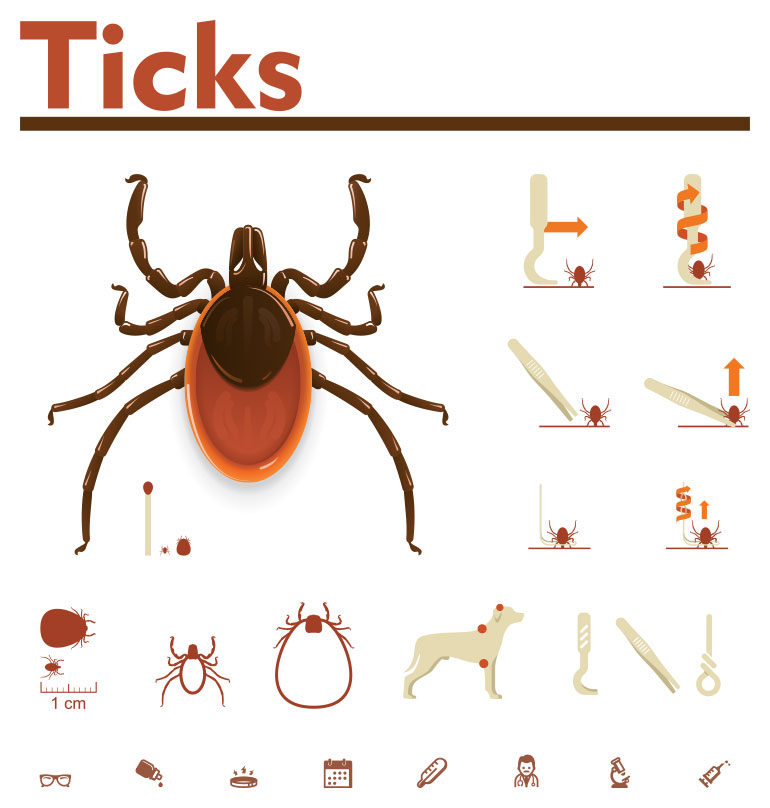
Learn How to Prevent Ticks to Keep Kitty Safe
As some tick-transmitted diseases can lead to dire consequences, it’s best to implement a continuous tick prevention routine. Follow the steps below to ensure your household and cats are tick-free for good.
1. Limit Ticks in and Around Your Home
If you have a lawn, mow the grass regularly and limit weeds in the garden. Ensure the garbage bins are fit with lids and keep rubbish areas clean. Vacuum your carpets often, at least once a week in high-risk areas.
2. Protect Kitty with Anti-Tick Treatment
Instead of wondering what kills ticks, try a preventative treatment such as spot-on treatments, collars, medicated shampoo or tick powder.
A spot-on treatment, like Bravecto® Spot-On for Cats, protects against ticks (and fleas) for three months. With extended protection, Bravecto®’s treatment limits the risk of forgetting to administer tick protection.
3. Restrict Your Cat’s Tick Access
Keep cats within the borders of your property, or make sure he or she doesn’t go into woody and bushy areas. If you enjoy travelling with your cat, make sure she is protected with a tick preventative treatment.
Ticks on Cats: Frequently Asked Questions
As some tick-transmitted diseases can lead to dire consequences, it’s best to implement a continuous tick prevention routine. Follow the steps below to ensure your household and cats are tick-free for good.
Are Ticks Dangerous to Cats?
Yes. A tick bite can be harmless, but many tick-transmitted diseases adversely affect a cat’s organs. It’s best to take your pet to the vet if you suspect there is a tick on your cat. To avoid a vet visit, ensure you implement routine tick protection.
Do Ticks Fall Off?
Yes. Once ticks are full, they will let go of their host’s skin and fall off. However, a tick’s feeding process may take several days within which the tick can transmit a disease to your cat.
Can Ticks Get on Indoor Cats?
Yes. Ticks go through multiple life cycles, and as larvae or nymph, they feed on small creatures like rodents. If mice or rats enter your home, your cat and family members are at risk of a tick bite. Catch ticks hiding in carpets and curtains by frequently vacuuming your home.
Check your cat during its daily grooming or petting sessions to find ticks, and add a tick prevention treatment into your cat care routine.
How To Stop Ticks on Cats?
Prevention is the best way to keep ticks from nibbling on your cat. Tick repellent like a collar, shampoo or spot-on treatment applied regularly can keep your cat protected. It’s critical to create a prevention routine such as administering Bravecto®’s effective Spot-On treatment every three months.
Keeping your home tick-free is the next step. Start with your home’s perimeter. Ticks sit on top of blades of grass. With shorter grass, ticks are less likely to get a grip on your cat. This is why you need to mow lawn regularly and remove tall weeds. Vacuum carpets and curtains indoors to catch ticks hiding within the threads.
You should also check your cat for ticks regularly. Groom your feline with a dense bristle brush daily to ensure their fur coat is healthy and free from tiny bloodsuckers.
How Long Does it Take a Tick to Die?
A tick’s lifecycle depends on its species. Unfed, tick larvae can survive for eight months or more, and adult ticks can live up to 18 months without nutrition. Ticks have various life cycles. The combined lifecycle of a tick can last up to four years. However, some tick species can’t survive 24 hours without food.
Learn more about Bravecto® products or find a stockist near you and protect your pets today!
Subscribe to our Newsletter
Get to know your furry friend better! Sign up for all things dog- or cat-related.
The Hairy Facts about the dreaded hairball
12 April 2021
Help! My dog’s barking mad! Volume 2
12 April 2021
Your Itchy, Scratchy Cat – All About Cat Skin Problems
12 April 2021
The Dog’s Diet: A Bone of contention?
01 April 2021
Mango Fly Worms: How to Spot and Eliminate them
Posted on November 28,2019
Managing Mange And Mites In Your Dog
Posted on June 11,2018
Why Do Cats Purr and How? Learn What Your Cat Is Saying
Posted on October 14,2020
How to Get Rid of Ear Mites in Dogs
Posted on November 06,2019









